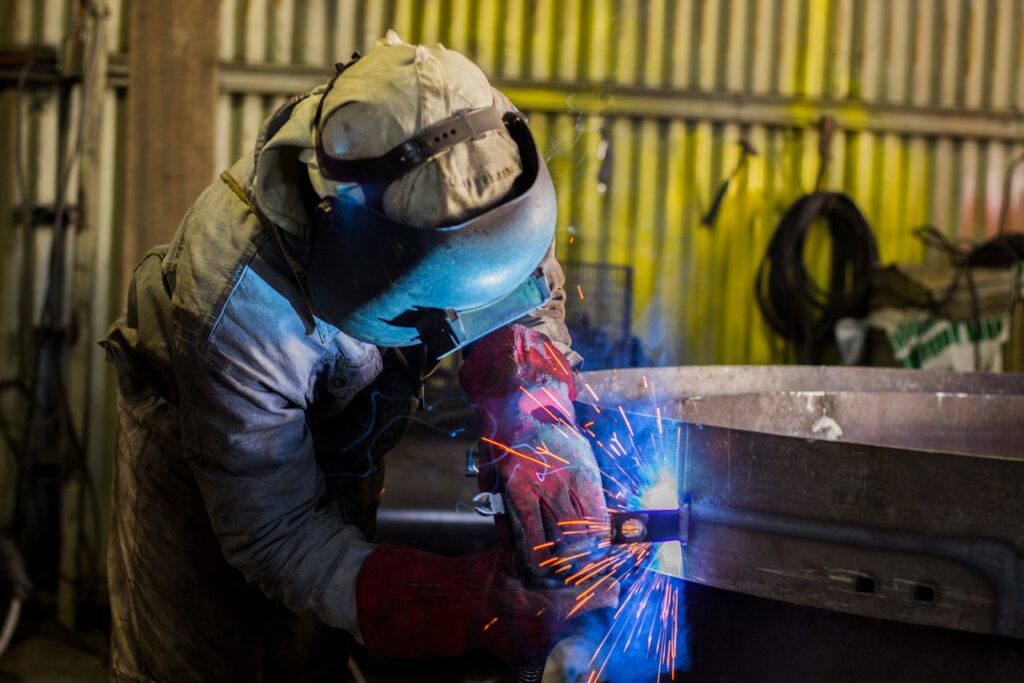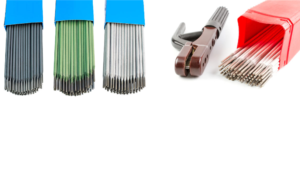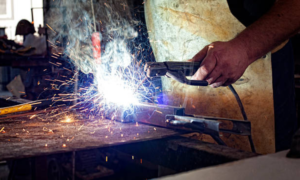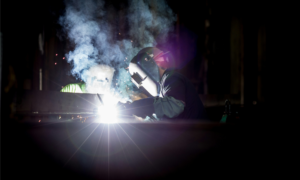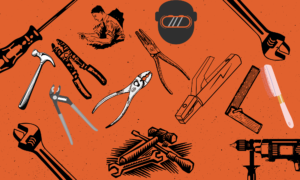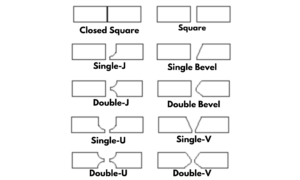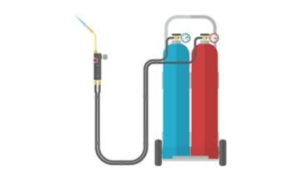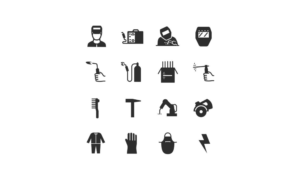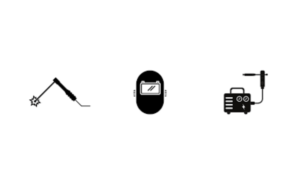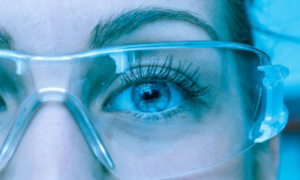A Gas Metal Arc Welding is also known as (GMAW) Metal Inert Gas (MIG) welding. It’s a versatile welding process used across various industries.
GMAW offers an efficient and relatively easy-to-learn technique for joining metal parts. The process employs a consumable wire electrode and a shielding gas, which flows through a welding gun. This method stands out for its speed and adaptability, suitable for both industrial fabrication and home use.
It works well with a wide range of metals and thicknesses, making it a preferred choice for many professionals. Its ability to produce cleaner welds with less splatter contributes to its popularity, ensuring high-quality results even for beginners. GMAW is a go-to method for projects requiring high production speeds and consistent, long welds.
Introduction To Gas Metal Arc Welding
The Birth Of Mig Welding
MIG welding revolutionized the fabrication world. Invented in the 1940s, it allowed for faster production. Post-World War II, MIG became popular. It helped meet the high demand for rapid construction. MIG stands for Metal Inert Gas. The name reflects the use of inert gases in the process.Fundamentals Of The Gmaw Process
The GMAW process has core components. A welding gun delivers the wire electrode. It feeds continuously. The gun also emits a shielding gas. This gas protects the weld from airborne contaminants. A power supply energizes the wire. This creates the arc that melts the wire into the base material, forming a strong joint. Key elements of GMAW include:- Electrode: A continuous solid wire acts as the filler material.
- Shielding gas: Typically argon or a mix with CO2 protects the weld.
- Power: A constant voltage source is crucial for a stable arc.
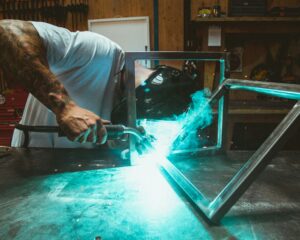
Key Components And Equipment
The Welding Gun And Wire Feed Unit
The welding gun is the welder’s main tool. It directs the wire and electric arc to the metal. The wire feed unit pushes the wire from the machine to the gun. Think of it like a pen delivering ink to paper.- Nozzle: Directs the shielding gas and protects the weld area.
- Contact Tip: Carries the current to melt the wire.
- Wire: Funneled through the gun to the weld spot.
Shielding Gases And Their Roles
Shielding gases protect the weld from the air. This helps prevent rust and weak joints. Different gases work for different metals.| Metal | Gas | Use |
|---|---|---|
| Aluminum | Argon | Clean welds |
| Steel | Carbon Dioxide or Mix | Deep penetration |
| Stainless Steel | Argon and Carbon Dioxide Mix | Smooth welds |
Mastery Techniques In Mig Welding
Optimizing Welding Parameters
Finding the right balance in welding parameters is crucial for top-notch welds. These parameters include voltage, wire feed speed, and gas flow rate.- Voltage: A higher voltage flattens the weld bead, while a lower one makes it more rounded.
- Wire Feed Speed: This controls how fast the filler metal is fed into the weld pool. It must match the welding speed.
- Gas Flow Rate: Adequate gas flow shields the weld from contamination but too much can cause turbulence and porosity.
Advanced Manipulation Of The Welding Gun
Wielding the welding gun with finesse is essential for MIG welding. The gun angle and speed influence the weld’s quality. To achieve consistency, practice the following gun movements:- Keep the gun at a 10 to 15-degree angle.
- Move the gun in a steady, controlled manner.
- Use a series of cursive ‘e’ or ‘u’ shapes to evenly distribute the weld metal.
Materials Compatibility
Metals Suited To Gmaw
GMAW thrives with certain materials. Let’s explore some of the most compatible metals:- Carbon Steel: The go-to for many welders due to its excellent weldability.
- Stainless Steel: Known for its corrosion resistance, it’s perfect for welding projects with longevity in mind.
- Aluminum: Lightweight and rustproof, but requires skill due to its high thermal conductivity.
- Alloy Metals: These include metals like nickel, copper, and titanium, offering unique properties for specialized applications.
- Galvanized Steel: Challenging due to its zinc coating but still weldable with GMAW.
Understanding Material Thickness And Joint Design
Different projects require different material thicknesses and joint designs. Here’s a brief guide:| Material Thickness | Recommended Joint Design |
|---|---|
| Thin (< 3mm) | Butt or lap joints with single-pass welding. |
| Medium (3mm – 6mm) | Fillet or groove joints with multi-pass welding. |
| Thick (> 6mm) | V-groove or bevel joints to allow weld penetration. |
Troubleshooting Common Mig Welding Issues
Porosity And How To Prevent It
Porosity in welding is a problem where gas gets trapped in the weld, leading to holes and weak joints. Here’s how to prevent this issue:- Check for dirty or rusty materials. Clean them before welding.
- Ensure the gas flow rate is correct. Consult the manual for optimal settings.
- Shielding gas should be appropriate for the material. Use the right type and mix.
- Avoid drafts that disturb the gas shield by welding in a sheltered area or using a windscreen.
Dealing With Weld Spatter And Irregularities
Weld spatter and irregularities can affect the final look and strength of your weld. To minimize these issues, follow these steps:- Ensure your equipment is set to the correct voltage and wire feed speed.
- Use anti-spatter spray on the nozzle and work area.
- Maintain a consistent angle and speed while welding.
- Check for worn contact tips and replace them regularly.
- Opt for a higher-quality wire that’s less prone to spatter.
Safety Considerations In Mig Welding
Personal Protective Equipment (ppe)
Personal protection is crucial in MIG Welding. Every welder must wear the right gear. This includes a welding helmet, fire-resistant clothing, gloves, and safety shoes. Ensure your PPE fits well and is in good condition.- Helmet: Protects face and eyes from ultraviolet and infrared rays.
- Gloves: Shield hands from heat and sparks.
- Clothing: Must be fire-resistant to prevent burns.
Hazard Awareness And Prevention
Knowing the hazards in MIG Welding is essential. Stay aware of your welding environment. Keep it clean and organized to prevent accidents. Make sure to use welding screens to shield others from the welding arc.- Fire Safety: Keep a fire extinguisher near. Check for flammable materials in the welding area.
- Ventilation: Ensure proper airflow. Avoid breathing in fumes.
- Electrical Safety: Inspect all equipment before use. Faulty equipment can cause shocks.
Frequently Asked Questions On A Gas Metal Arc Welding Is Also Known As
What Is The Gas Welding Process Also Known As?
The gas welding process is also known as oxy-fuel welding or oxyacetylene welding. It involves using a flame fueled by oxygen and acetylene gases.
What Is Another Name For Metal Arc Welding?
Another term for metal arc welding is Shielded Metal Arc Welding, commonly abbreviated as SMAW.
What Is Gas Metal Arc Welding Also Known As Quizlet?
Gas Metal Arc Welding is also known as MIG welding, which stands for Metal Inert Gas welding.
Is Mig And Gmaw The Same?
Yes, MIG (Metal Inert Gas) welding and GMAW (Gas Metal Arc Welding) refer to the same process of using a wire-fed welding gun with an inert gas shield.
Conclusion
Wrapping up our exploration of this versatile welding technique, remember that Gas Metal Arc Welding is synonymous with GMAW. Embracing this method means tapping into efficiency and adaptability for a vast range of projects. It’s key to advancing your metalwork, ensuring strong, long-lasting joins every time.
Keep GMAW in mind for your next welding endeavor!

